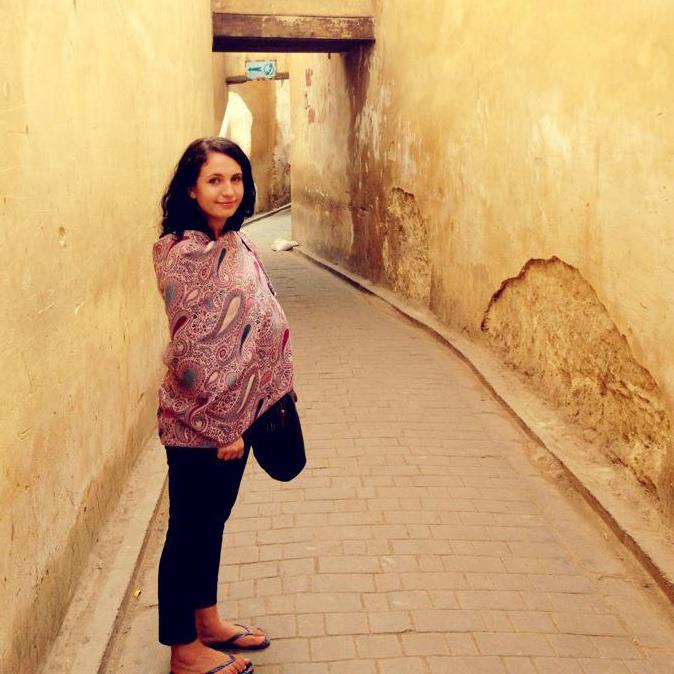Tips for Visiting Nusa Lembongan
This was my first trip to Nusa Lembongan and I ended up way longer on the island that I expected as the ferries were cancelled to the Gilli islands for a few days and it was a great base for catching up on work. I would definitely visit again and it provides a really nice contrast to Bali both in terms of size, but also in how it feels.
How Long to Spend in Nusa Lembongan?
I would say a few days is enough, 3-4 would probably be ideal. You could spend a little more, especially if you’re doing a diving course, some snorkeling or surfing. The great thing about Nusa Lembongan over the Gilli Islands is that you can surf. I went water kayaking while I was there which was really interesting as I have a fear of water, but I had a lot of fun.
How to get to Nusa Lembongan?
You can take ferries from Sanur a few times a day. There are a few companies and the price they advertise, even on the tickets, is always a lot more than you should pay. Negotiate and try the walk away approach for a better deal. Some ferries go direct from Nusa L. to Gilli T. For those of you who are terrified of boats, like I am, Nusa L might be a better choice for you as the waters are a lot less choppy than the Gilli Islands.
What to do in Nusa Lembongan?
It’s a pretty chilled out island. Most people go there for the diving and where I stayed, The Secret Garden Bungalows, had a great diving program on Nusa Lembongan. There’s the water sports mentioned above, but the highlight of my trip there was renting a scooter. We headed to the smaller sister island, Nusa Ceningan and explored. We spent the majority of the time confused but checked out some highlights including the beautiful beaches and the Blue Lagoon. The suspension bridge connecting the two islands is really something special and worth a visit in itself. I have no photos, as I was absolutely terrified crossing it – so much so, that I walked across.
I also really liked Dream Beach, which had a nice Warung over looking the Bay. It would be easy to spend a few lazy hours here, on a sunny day.
The island is a lot more laid back than the Gillis and even Bali itself, which is perfect if you want to break away from the standard tourist route. I felt that there weren’t a lot of tourists when we were there and that the locals were really friendly. It is a beautiful island and while the beaches are not quite up to the standard of the Gillis, I thoroughly enjoyed my time there and would love to head back.
Secret Garden Bungalows Review
If you’re heading to Nusa Lembongan, there’s really no where better to stay than Secret Garden Bungalows. This budget-friendly accommodation offers so much that it’s a wonderful place to stay, no matter your reason for visiting this bite-sized island.
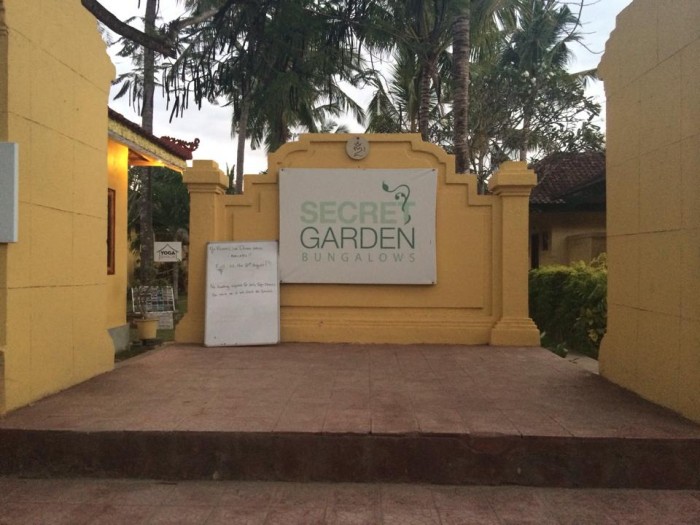
Secret Garden Bungalows Nusa Lembongan Review
The Location
Moments walk from the beach, the Secret Garden does really feel like a hidden tropical oasis. The garden itself is beautiful and perfectly placed near a number of great cafes including Tigerlillys and Bali Eco Cafe (if you need fast internet, Bali Eco Cafe is my top choice). Most things are walkable on the island, but if you want to do some decent exploring you should rent a scooter. I wouldn’t ride a scooter in most parts of Asia, firstly because of the traffic and secondly because police often ask for bribes. We had no problems on Nusa Lembongan and even met some tourists who let their children ride scooters around.
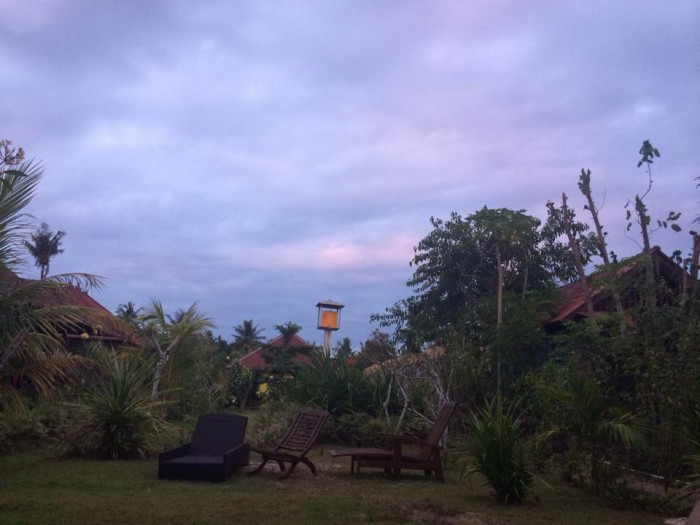
The Facilities
While the bungalows themselves are pretty basic, they have everything you need including a fan which is essential. There’s an outdoor style bathroom, and our room had some string to hang washing which was perfect. The thing I loved most about Secret Garden Bungalows was their pool and the loungers around the pool. For the price point, this is pretty rare in Asia and was really appreciated. There’s also the Yoga Shack, where you can do yoga (for a fee) and diving courses are offered onsite. Don’t make the same mistake we made: book in advance! During our stay, both the room and diving course were extremely booked up. When we decided to extend our stay, we were absolutely gutted that we had to move accommodation.
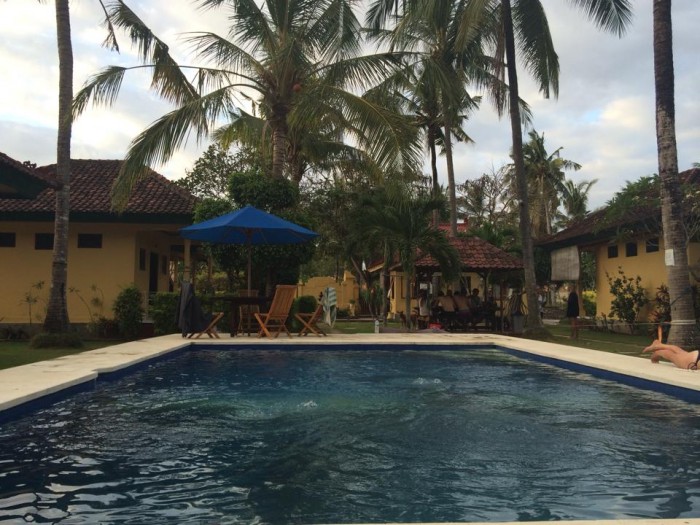
The Social Element
Another thing that I loved about staying here is that there was a really chilled out vibe. The staff were exceptionally friendly and happy to help answer any questions, and the other travelers were quite relaxed too. It was quite easy to meet people, but also possible to have quite a private holiday. Whatever you want – I love that balance.
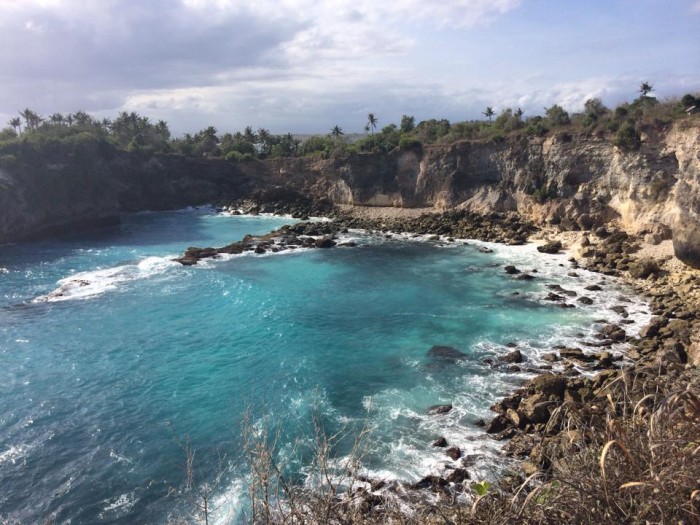
Book here if… you want a fun holiday, to be comfortable without flashy and want to be close to everything you’ll need. The main thing you need to know is Secret Garden Bungalows really does offer exceptional value and Nuse Lembongan is a beautiful island that I would certainly visit again.
Best Things to do in Sexy Seminyak
It sounds a little funny to describe somewhere in Bali as sexy, but the truth is there’s something special about Seminyak. It’s got a cool vibe that’s hard to ignore. With little boutique shops lining the streets, high end cafes and restaurants… it feels like a fusion between Europe and Bali. Often regarded as one of the more ‘upper class’ areas of Bali, Seminyak is a must visit destination if you like shopping and to be pampered – all while being moments away from the beach.
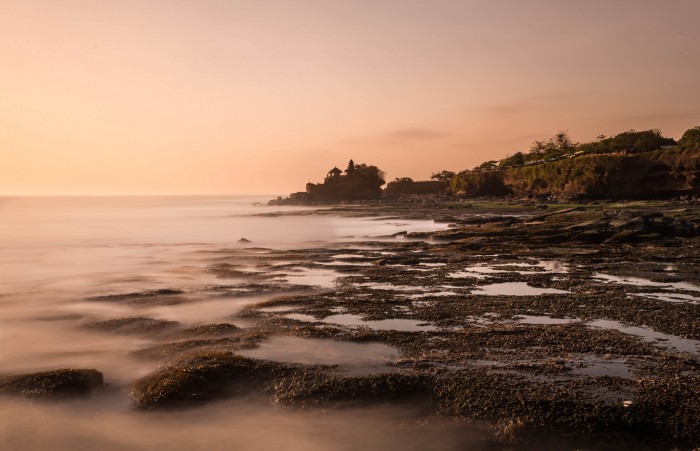
1) Hit the Spa
You’ll be spoiled for choices in terms of the calibre and number of spas in Seminyak. From getting your hair done, to fancy nail bars, you’re literally spoiled for choice. During my stay in Seminyak I decided to have a full body treatment: a body scrub, facial and massage. The treatment itself went on for 2.5 hours and was very reasonably priced. I was staying at Sun Island Boutique Villas in Seminyak and just decided to use their spa. It was the best spa in Seminyak and I thoroughly enjoyed the experience!
2) Go Shopping
Depending on the style of clothing you like Seminyak might be your shopping haven or hell. For chic or casual clothing you’ll find a number of boutiques lining the streets. It’s a great place to wander around and just see what takes your fancy. Bare in mind that some of the stores can host Western prices, so if you’re here to shop make sure your credit card is fully loaded. Buddha Wear is a famous brand that’s worth checking out – I really liked it.
3) People Watch
Such a diverse range of people come to Seminyak, it can be a lot of fun to sit in a nice cafe and watch the crowds dribble past. From young beach bums to older, sophisticated travellers, almost every type of traveller winds up here.
4) Visit the Beach
Most places in Bali (except central Bali) are never too far away from the beach and that’s part of the reason I love this little island. There are some really nice beaches in Seminyak. This is also a fabulous place to watch the sunset. The best day is Sunday as most people have the day off and the beach is really busy. You can grab some grabs along the beach, rent surf boards or just admire the beautiful ocean.
5) Surfing
This is a fabulous place to learn to surf, it is great for beginners. While there are more popular parts of Bali for the more advanced surfers, Seminyak is a great place to be introduced to this sport or to practice if you’re rusty. It’s easy to rent a board for around $5 per hour, and don’t forget to negotiate daily rates.
Seminyak has it all – with the glitz and glamour of somewhere else. It is the most polished part of Bali I’ve visited and a great place to relax and be pampered.
Have you been to Seminyak before? What did you like?
The Great Road Trip Adventure: Why France Can Rival America
When we think of road trips, most of us think of America, and rightly so. America is a hotbed of great motoring destinations, and Route 66 is the most famous driving road in the world. This is all well and good, but what if we require something a little closer to home that provides all the driving joy of America with greater proximity to the home comforts we’re used to. The answer is France, and here’s why.
From the rugged coastline of Brittany to the peaks of the Alps, it is hard to argue that France doesn’t contain something for everyone. In fact, the only problem that you’ll have when you’re in France is deciding exactly where you’d like to visit. So, if you’ve only got time to visit one of the country’s regions, which one should you opt for?
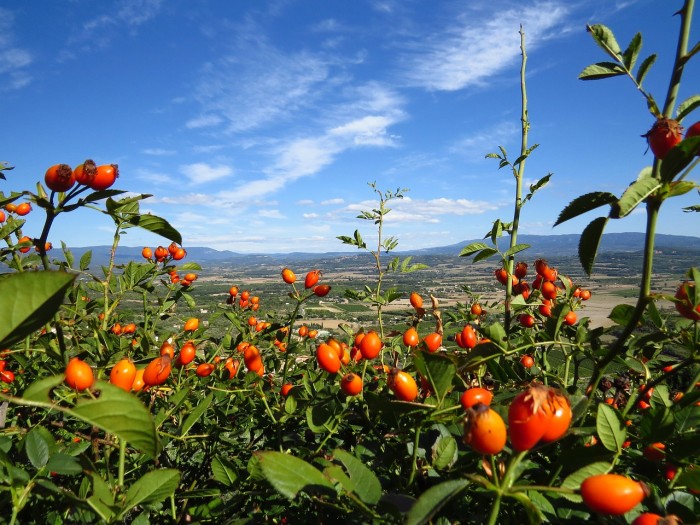
South of France: A Trip Along the Coast
Starting at Montpellier gives you a wealth of options, and here you can either stick to the coast or head through Provence, whichever is best for you. Either way, you can finish in Nice.
If you choose to stick to the coast then there are some great sights that anyone would enjoy. From the chic and glamorous St. Tropez and Cannes to small towns and villages such as Cassis, there’s something for everyone
Southwest: Booze and Beaches
It’s hard to think about Bordeaux in France without thinking about wine. It may even be that you’re visiting France for this very reason (as long as you’re not the one that’s driving, of course.) To incorporate everything that’s great about France’s wine and beaches, the Toulouse-Bordeaux-Biarritz triangle is perfect. Stay within it and you can’t go far wrong. The opportunities are endless. From pilgrimage spots to the Spanish border to Europe’s longest beach, this route has something for everyone.
The N85: Napoleon’s Route Road Trip
Taking you all the way from the Alps to the French Riviera, Napoleon’s route road trip is a set route unlike our other two suggestions. The way is paved for you by large golden eagle markers that show you the route right across France. It might be epic, and it might take a considerable length of time, but it ensures that you get to take in everything that’s great about France. If you want more information on this route, check out this blog post which explains how the route got its name.
Here are just three of the great routes that you can take in France. Hopefully this has sufficiently whetted your appetite and galvanised you into making France your next road trip destination.
Essential Things to do in Manchester
Manchester, believe it or not isn’t just a football team. After travelling there recently I soon discovered Manchester has quite a few things on offer. Here are my top things to do whilst visiting there. If you’re trying to figure out the best way to get to this lively city, why not consider Flybe? Here are the best things to keep you entertained in Manchester:
1. Head up to Cloud 23 and enjoy the view. You can’t go to Manchester without checking out this beautiful restaurant and bar. Located in the Beetham Tower which is the tallest tower in Manchester, Cloud 23 offers floor to ceiling views across the city. Not only that it has some great service, food and cocktails too.
2. Soak in a bit of history and visit the Manchester Cathedral. Located behind one of Manchester’s busy shopping districts this stunning Cathedral dates back to 1215 and offers beautiful stain glass windows and ancient architecture.
3. Shop up a storm at Lowry outlet mall. This outlet mall has something for everyone and has great discounts of up to 60%. If you find you get sick and tired of shopping then there is also has you cant watch a movie at the 8 screen cinema located in the mall.

4. Have a night out on the town. Manchester is known for it’s heaving nightlife, so if clubbing is your thing hit the town and enjoy the crazy nightlife this city has to offer. Or even the local pubs are known to get a little wild. Fifth Ave pub is known for having $1 drink nights whilst playing all old English bands from the North, and is well worth a visit.
5. Take an afternoon stroll through the city. You can enjoy an afternoon walking through the Piccadilly gardens and explore the many local pubs throughout the city. Stop in at the beautiful Manchester Library or Town Hall to view some local sites.
6. Go to a football match and scream your heart out. You really can’t go to Manchester without experiencing a live match from one of their famous football teams. You can pick from either Manchester United or Manchester City. Either one be prepared to be surrounded by louds screams and some of the most passionate football fans you will ever come across. Oh and football is soccer in Britain, in case you were confusing it with the other sport.
7. Visit Old Trafford Museum and take a Stadium Tour. If going to a football match with the intense football crowd is too much, then you can visit the famous home to Manchester United at Old Trafford Museum and also take a stadium tour. If you are lucky you may even get a glimpse of the Manchester United team in training.
London to Paris by Train – A Grand Adventure
London to Paris is one of the most popular travel routes in Europe, and can be done by either flying or taking the train. Whether you are travelling for business or leisure here are my 5 tops reasons I think you should always opt for travelling by train.
1. The train is far more user friendly than taking a flight. When taking the train you don’t have to deal with the stress of getting to the airport, traffic, long check in queues, customs officials and all the other stresses that come with travelling through airports. As well you get to avoid bad airport food, stressed out travellers and grumpy staff. Whether you choose Railbookers bespoke train holidays or just opt for a train trip across, your experience will generally be a LOT more personal than taking a flight!
2. The trains on this route are very pleasant to travel on. There are so many budget airlines that fly between London and Paris these days. If you end up flying on one of these carriers you will share the cabin squished in with a hundred other passenger and have absolutely no legroom at all. The Eurostar train is very well maintained and has very comfortable cabins. If you need to work or sleep during your trip there is a lot more room to do so on the train.
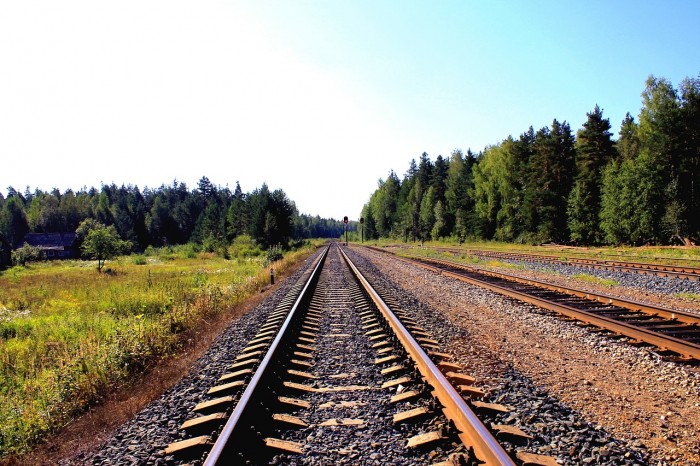
3. The train is actually faster, despite having a longer travel time. Once you add in the extra time you need to get to the airport, check in early and then go through security, the train works out to be quicker. The big airports of London require you to be there a couple of hours before a flight where as the Eurostar you only need to be there 30 minutes before departure and the queues are minimal.
4. You save money on costs of travelling to and from the airport. Airports are always located far out of the city, especially in London. So if you don’t want to take the long tube ride out there and get a taxi, this ends up being a very expensive. A taxi in London to one of the many airports can cost nearly $100. Then you also have the cost of getting to your hotel from the airport once you arrive. Take the train and you arrive right in the city centre, often right near your hotel.
5. You get to see some of the countryside. When you fly you miss out on getting to view some of the best scenery in Europe, instead all you see is the tarmac and perhaps the city skyline as you fly in. When you take the train you get to enjoy a beautiful view of the European countryside all from your extremely comfortable seat.
All in all if you take the train you will be arriving a lot more calm, refreshed and ready to enjoy the beautiful city of Paris.
Sun Island Boutique Villas & Spa Seminyak Review
Nestled down a line of gorgeous trees and plants, the walk to the villas at Sun Island Seminyak ensures you know you’re in for a special treat. This feels more like a botanical garden than the walkway to a room. Our villa had everything we needed – and more – to ensure a comfortable, relaxing and luxurious stay.
Sun Island Boutique Villas & Spa Seminyak Review: The Sun Island Seminyak Experience:
Our villa at Sun Island Seminyak had a private pool, which was really a special treat. A private pool means you can really enjoy the pool with your partner, without the worry of children coming along and ruining the ambience. There was a little water feature over the pool which was so relaxing to listen to and I actually fell asleep on my lounger by my room – that’s how relaxed I was. It was amazing having the pool literally a meter or two from our bedroom, we could open up the sliding doors and see the pool from our bed.
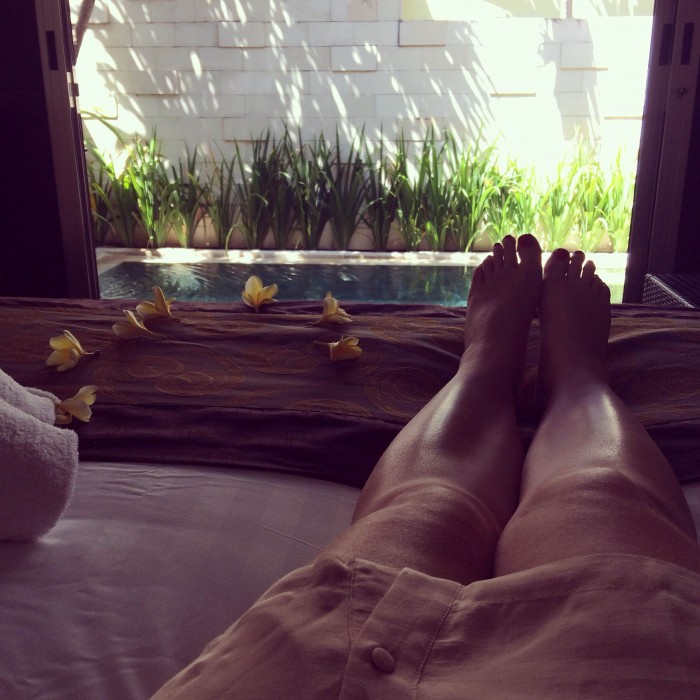
In the afternoon I enjoyed some afternoon tea, a few iced coffees and conversations with the lovely bar staff while I did some writing by the main, larger pool. It was the perfect way to unwind. I loved the double loungers, very romantic.
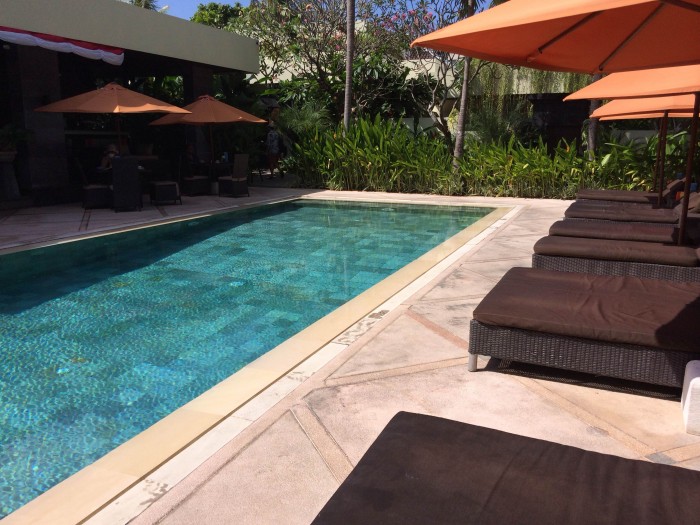
The Villa
We had a villa with a private pool which had a small kitchen area with everything you would need to cook and enjoy a meal from the privacy of your own room – a luxury we don’t often get when we’re traveling. We didn’t make use of this though, as the restaurant was just too tempting.
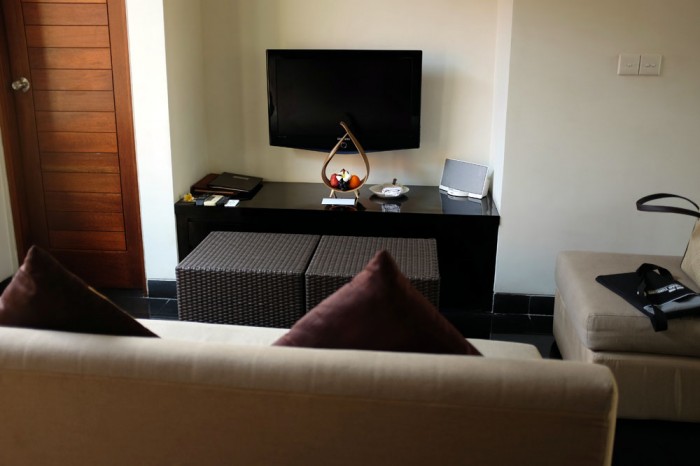

There was also a television as well as a few couches so you could really relax and unwind. The bathroom was a highlight for me with a double basin, indoor AND outdoor shower and bathtub. The villa, including the outdoor area, was very spacious and despite really enjoying the facilities of the rest of the hotel, I spent most of my time in my villa. Because of the layout of the villas it felt very private at all times and I wasn’t really aware of anyone else staying there – which I think is important when you are after a relaxing holiday.

The Spa
I decided to indulge in a treatment at Sun Island Seminyak’s spa and was very impressed by the quality of services and the prices as well. I had a 2.5 hour treatment which included a massage, body scrub and facial. It cost about 1/3 of what it would in New Zealand, but the quality was on par with NZ services. I felt so relaxed throughout the process that I fell asleep numerous times.
Book here if… you want to escape to paradise, seriously! My partner and I were so happy here and felt like it was really a special destination with a lot of heart. We saw some families here too, but the focus mostly was on couples obviously looking for a special place to get away from it all.
Having Reservations about Going on a Gap Year?
It is important to consider the fact that a year is a long time and unless you’re already quite a free-spirit it is more than likely you can’t just drop everything and go. With this situation comes the inevitable worries and reservations that may in the end inhibit you from travelling altogether.
Do not be afraid though. The following is a breakdown of some of the pre-gap year problems you may encounter and the solutions to ensure you fulfill your expeditionary ambitions.
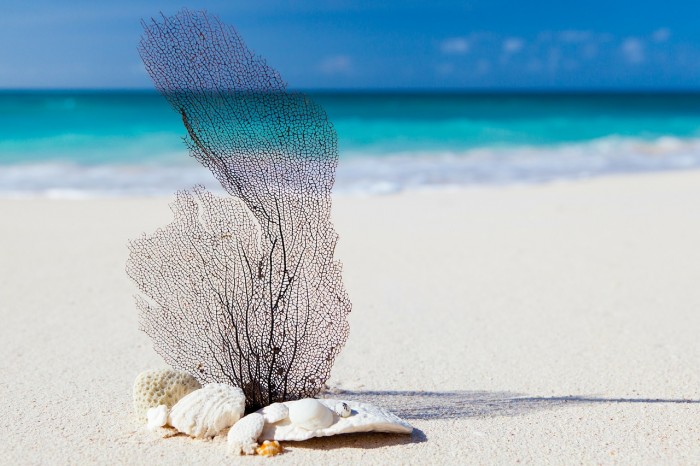
The Worries
Some of the main worries that often affect people include:
Finances – whether you are a student or working full time, money (or lack thereof) is often a big worry for many.
Travel costs – particularly flights – are not cheap and nor is the cost of living in certain places.
Activities – it is not just about going places; it is entertaining yourself while you are there. It would be depressing to travel and find yourself just as bored as you were at home.
Storage – as previously stated above, a year is a long time and ultimately what about all your precious belongings it has taken your lifetime to amass? How can you be sure they’re safe?
Family and Friends – the people who love and care about you unfortunately won’t always be there. Homesickness can be dangerously infectious.
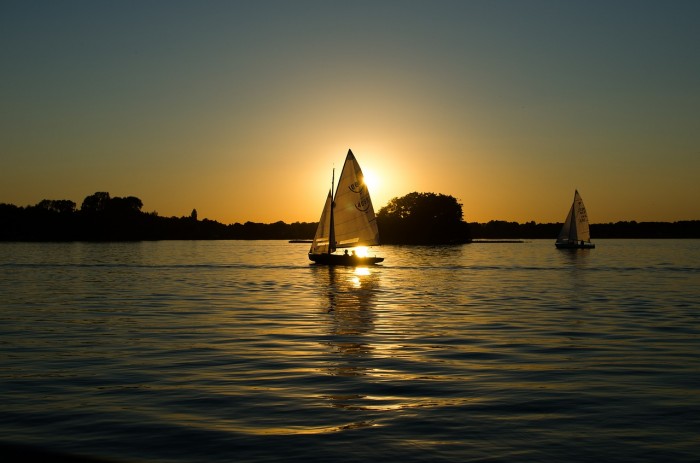
The Solutions
What you’ll be happy to know is that there are easy solutions to all of these:
Finances – this one is simple, you save money. Taking a loan is always risky so the most sensible course of action is to give yourself long enough to gather enough money.
Activities – the internet is a wonderful resource. It might sound obvious but thoroughly research your intended destinations for the cheapest/best places to visit or avoid. Also some trips offer work placements to subsidise your expenses.
Storage – There are professional and dependable storage facilities like Safestore Ltd to securely hold your belongings while you are away. Not only does this provide a straightforward service it also ensures you have peace of mind wherever you are.
Family and Friends – not an easy one to deal with as you will always miss your loved ones. What you need to remember is these people will want you to enjoy yourself, plus you will meet lots of new people who will become your surrogate family while you’re away.
The Trip of a Lifetime
If you take this advice you will make your gap year exactly what this subheading suggests; so don’t let your worries stop you from enjoying possibly the greatest time of your life.
Returning to Thailand
Koh Phi Phi used to be my favourite place in Thailand. It’s where I first started traveling. It’s where I gained a world of confidence. It’s where I met some people who heavily shaped my life. I even had a Phi Phi song that my friends and I would dance to.
When I was just in Koh Phi Phi was easily the worst experience I’ve ever had traveling. Most of you would know how much breakups suck, but this wasn’t a standard breakup. It was so painful – the most painful. Not only did I lose my boyfriend, I lost my best friend, I lost a little faith in humanity. I lost my ability to trust freely. I lost a lot – in one of my favourite places in the world.
I don’t really think it’s appropriate to go into details of the breakup here – it serves no one. But it’s safe to say this is easily the most emotionally devastating thing I have gone through in my life. It’s worse than death, because it didn’t have to happen like this. He chose for it to be this way, for it to hurt like this. He chose it all and doesn’t seem to care that it’s affected me like this. That sucks.
After everything came out, I knew I had to leave Thailand immediately and take myself somewhere to heal and Ubud was the only place I wanted to go.
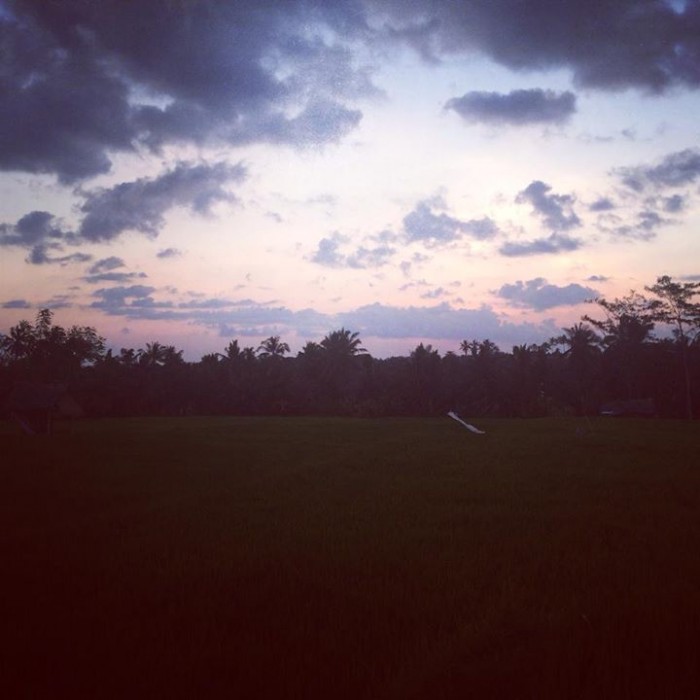
After a few days of conversations with my lovely friend and a couple of emotionally challenging yoga classes, I decided to head to Villa Kitty.
I love volunteering and I’ve really missed having a cat, so it seemed like a great idea.
When I arrived, things were a lot more confronting than I expected. I was guided by the owner to a small room with two cats that were very antisocial. They weren’t particularly interested in me. While I tried to pat them and be patient with them, I felt extremely disheartened. I felt very unloved. And who wouldn’t, when the person you loved most in the world hurt you in such a way and now you have some cats rejecting you too. I felt so sorry for myself and wanted to burst into tears and run out of that place.
But I stayed.
I lingered past the discomfort and slowly, in time, the cats warmed up to me. It was obvious these cats had been through a lot, and here they were nuzzling against me and letting me pat them. It was quite beautiful.
In the afternoon a new girl showed up. She was a lovely girl and just one of those people I know I was destined to meet.
We talked about everything – our fears, our passions, relationships, love, what we want from life.
She told me a story that resonated so deeply with me that I knew I had to meet her in that moment to hear that exact story.
Later that day we went to a cafe and I met two of her friends and another two guys who were sitting across from me. I tried to introduce myself without being the girl who just had her heart broken, but honestly, it seemed to just slip out whenever anyone asked how long I was traveling for. How could I tell ‘my story’ without him and what happened and what brought me here?
The next day I met up with my new friends and we hung out with the kitties and then went to dinner, where I met another girl. Four girls, sitting around a table talking about our heartbreak stories. It was really sad. I felt awful. We’d all been screwed over by people we really loved and it just sucked. Misery loves company.
I went home and felt awful and cried. I decided I didn’t want to be defined as the girl who was hurt by the person she loved most. I just wanted to be me again. A fresh start. So I decided that he wouldn’t be a part of my story, until I could say his name without wanting to cry.
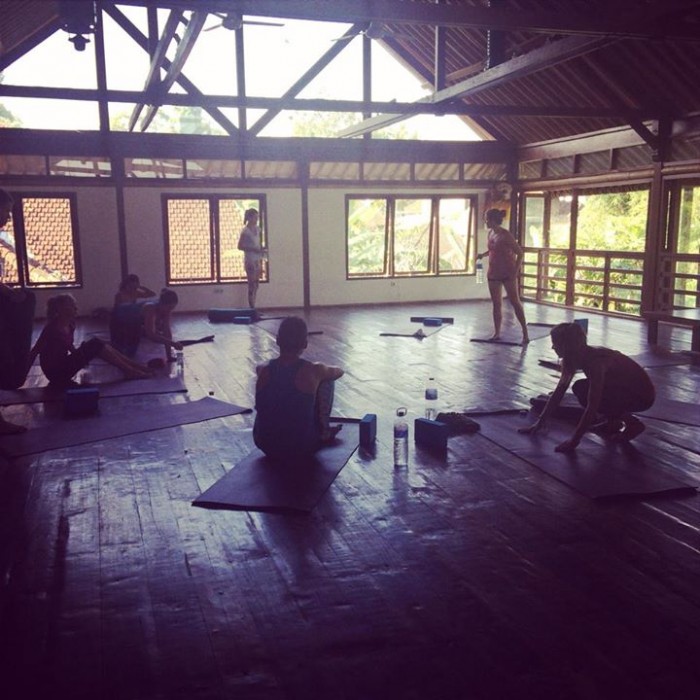
The next day I met some new people and I introduced myself. Immediately they asked how long I had been traveling for and I cut out the part of our trip where we had been together. I’d be traveling a week, I said. I disguised my lack of plans (because all of our plans had been crushed and I couldn’t bare to think of the future) by pretending I was very, very free spirited and just going with it. I felt bad about lying. I felt bad about cutting out the part of our trip that we shared together. A little part of me choked.
But I knew I needed a fresh start to move forward. I couldn’t keep being the Heart Broken Girl. It didn’t really suit me.
Since then I’ve been absolutely blessed to meet so many people I know that I was destined to meet. There have been signs flashing in front of me from every direction… guiding me and letting me know I’m exactly where I’m supposed to be.
After lecturing a new friend on how I believe in “signs”, I asked him what his favourite movie was – he replied The Lion King. No more than 2 minutes later, I met a girl who designed tattoo fonts. I mentioned I was contemplating a tattoo and she showed me hers “Hakuna Matata” – how does this even happen? I’ve never seen someone with that tattooed before, let alone moments after I was talking about the very movie it was from.
Hukana Matata.

The calibre of conversations I’ve had in Ubud has been outstanding. I’ve had so much guidance in terms of how I want to expand my business, the kind of person I want to be, what I want from life, what I’m going to give back to the world and what I’m going to accept in future. I fell in love with yoga and realised how deeply I can connect with myself through the practice.
Tomorrow I head back to Thailand. I am a bit apprehensive about it, because I know he’s there. I don’t know if he’s in Bangkok, but it feels so strange to me that we could be a few hours apart and not seeing each other. A part of me really hopes he messages me, and another part of me isn’t sure. It’s just weird. I find it so strange to consider that the person I shared everything with is now basically a stranger. Only a few weeks ago we were in hysterics about our ugly luging photo – and now this? I don’t really understand how it got to here.
Returning to Thailand will be very hard for me. Emotions will be floating through my body. A part of me will wonder if we’ll bump into each other and will be sad if we don’t. But I’m going to push through the discomfort, because I want to be there for me.
Beyond Thailand, I’ve made some loose plans. I’ve always wanted to go to New York, so I think I’ll head there in maybe 3-4 weeks. After that, I’m going to go to Guatemala to learn Spanish and to volunteer at Casa Guatemala. After that? I don’t know. I’ll see where my heart wants to go. Part of me wants to do a yoga retreat in Costa Rica, another part of me wants to go to Cuba. A bigger part of me has no idea and is OK with that.
As much as this hurts, I’m determined to ensure this becomes one of the best things that’s ever happened to me. When I found out what happened and that it was over, I felt destroyed. I felt so lost. Now I realise I’m a blank canvas and I’m going to paint myself with the most wonderful adventures.
I’m going to have an exceptional life and it’s only just starting now.
The Five Best Things About Visiting Toronto
Fortune magazine recently billed Toronto as the world’s “newest great city,” and for good reason: You’ll find an exciting array things to see and do in Toronto. If you’re short on time, you might have trouble figuring out exactly what to do. Let this list help you out:
Amazing Restaurants and Eateries
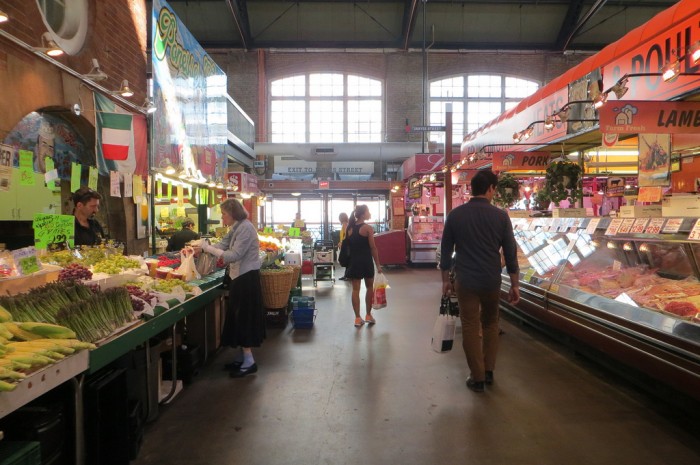
The St. Lawrence Market on Front St. has served up fresh produce, meats and cheeses since 1901. Food and Wine Magazine calls it one of the “world’s best food markets.” Once your shopping bag – or your tummy – is full, be sure to browse the market’s many antique displays, flea markets, and seasonal wares, which are sold mostly on weekends.
For dessert, check out the Bang Bang Ice Cream and Bakery on Ossington Avenue. This delectable bakery/dairy focuses on hand-stuffed, homemade ice cream sandwiches and ice cream-filled macaroons. Along with great staple flavors like Burnt Toffee, the bakery regularly tantalizes its customers with a “surprise” flavor-of-the-day.
Fascinating Museums
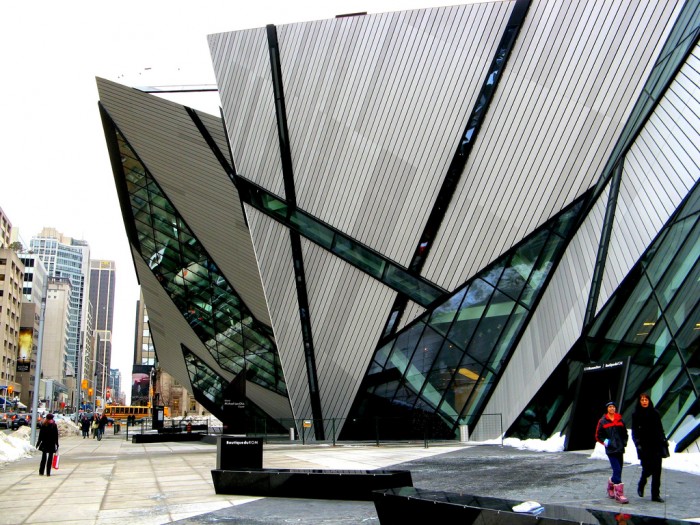
After you’ve fed your stomach, feed your brain with an educational trip to one of Toronto’s premier museums. You simply cannot go wrong with a visit to the Royal Ontario Museum, or ROM, situated just north of the University of Toronto campus. This place has something for everyone: a gallery of dinosaur skeletons, a Chinese sculpture display spanning 1,500 years, archaeological textile and costume layouts from centuries ago. The kids will not be bored either; they can enjoy a fun array of hands-on projects, learning labs and a close-up view of a young Egyptian mummy.
The Ontario Science Centre is an equally fascinating interactive museum. Visitors can make full-body music in a sound panel room, watch electromagnetic ferrofluid dance, or create their own frame-by-frame animated movie. Children can build their own roller coaster and play with moveable dams and water wheels at KidSpark, a child-centered area of the museum. There’s also the Space Room full of cosmic rays and astronaut artifacts, the Living Earth area filled with natural wonders large and small, and the Science Arcade where guests can touch a tornado and take a virtual flight from the perspective of a raptor.
If you’re a hockey fan, the Hockey Hall of Fame and Museum is a great place to spend a few hours. This is not just a place where guests stand around admiring the Stanley Cup and other hockey memorabilia; it is a hands-on museum where visitors can play interactive hockey with animated versions of players like Carey Price and Sidney Crosby, compete against one another in “Slapshot Trivia,” and take in exciting 3D hockey films.
Toronto Theater District

Toronto’s theatrical offerings rank right up there with New York City’s Broadway and the fine productions of London’s West End. The city hosts several theatrical festivals each year and is a regular stop for touring theater troupes from New York and London. Landmark theaters include the Ed Mirvish Theater (formerly known as the Pantages), the Princess of Wales Theater, and Air Canada Centre, where guests can lose themselves in brilliant dramatic and musical performances for a few hours.
Current and recent professional theatrical productions in Toronto include Tony Award winners like Wicked by Stephen Schwartz and Winnie Holzman, The Book of Mormon by Trey Parker and Matt Stone, and Once, a newer musical based on the book by Enda Walsh. Concert-lovers will also find a treasure trove of offerings in the city’s theater district, including performances by musical greats like Cher, Jason Mraz, and Itzhak Perlman. Comedy seekers regularly enjoy top-notch stand-up performers like Jay Leno and Lewis Black.
Tickets to Toronto’s high-demand productions sell fast, so travelers would be wise to plan ahead if they wish to see a show or catch a concert during their trip. Last-minute tickets can sometimes be snagged, however, so if you’re in the area and hoping to relax with a night at the theater, be sure to scour your options.
Beautiful Sights
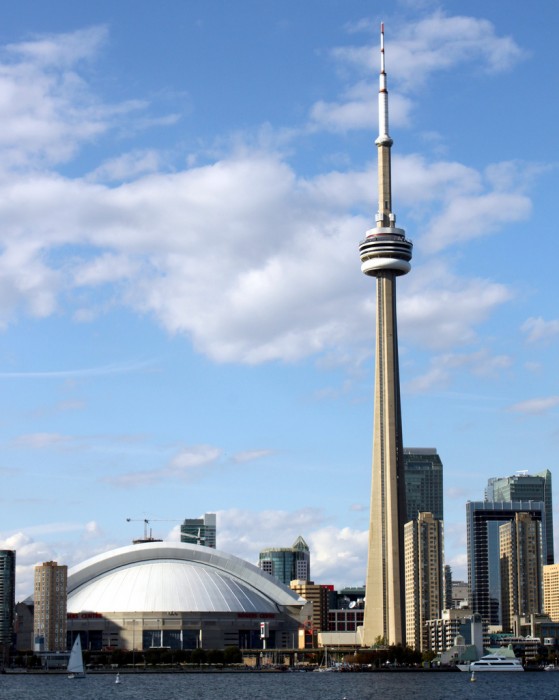
Your Toronto visit wouldn’t be complete without a trip to the top of the 1,168-foot CN Tower. Enjoy a panoramic view of the city before you set out to explore, or ascend the tower after your sight-seeing adventure is through for a cumulative review of all the magnificent things you experienced on your vacation. Tickets to the CN tower can be purchased online for singles or groups.
The Toronto Islands offer a peaceful reprieve from the hustle and bustle of the big city. The islands – eight in all – offer a car-free and carefree environment where visitors can hike, bike, and sun bathe on the beach. Adventurers can rent boats in the summer, ski in the winter, or check out the Centreville Amusement Park for water rides, kiddie rides, mini golf, and a roller coaster. At the park’s Far Enough Farm, guests get to meet farm animals, waterfowl, rodents, and other fun fuzzy creatures.
Other can’t-miss attractions include the Toronto Zoo with animals from exciting locales like Australia, Eurasia, and the African tundra and Canada’s most iconic destination, Niagara Falls, where families can enjoy water parks, attend festivals, and sneak up-close peeks at the falls on the legendary Maid of the Mist. If you’re overwhelmed by all these fantastic choices – and who wouldn’t be? – check out this list of Toronto events from Expedia to help narrow your itinerary search.
Relaxation within a Big City Vibe
After a day of pleasurable exhaustion in Toronto, sleep feels heavenly in any one of the city’s fine hotels. If you’re up for a unique hotel with one-of-a-kind rooms and artsy creature comforts, check out the Gladstone on Queen Street West. If you’ve got budgeting on the brain, the Rex Jazz & Blues Bar Hotel might be the perfect place for you to rest your head. Not sure what to choose? Hop on your favorite travel sites to help you with these tough decisions.
Stop searching for destinations online and buy your ticket to one of the greatest cities in North America. It’s all about living life to the fullest in Toronto.

